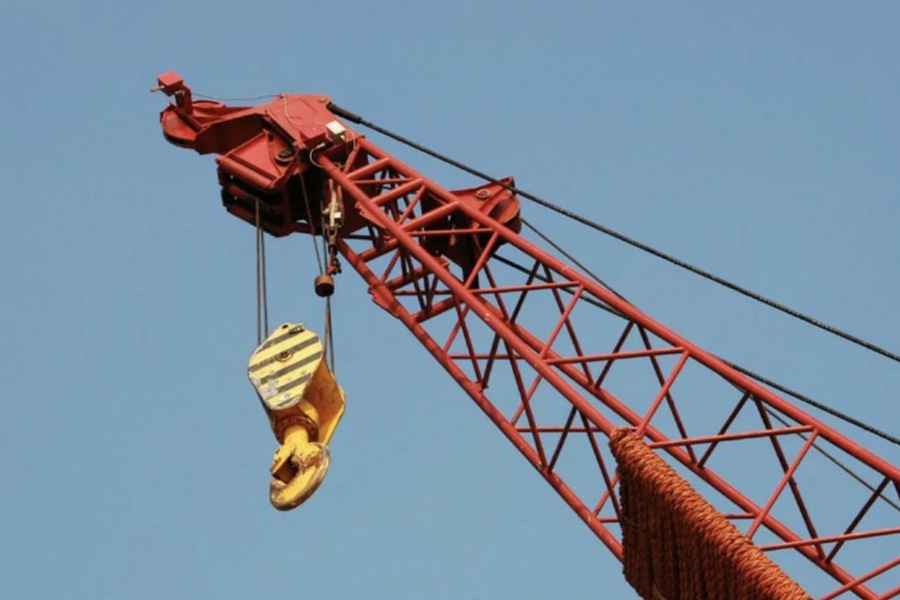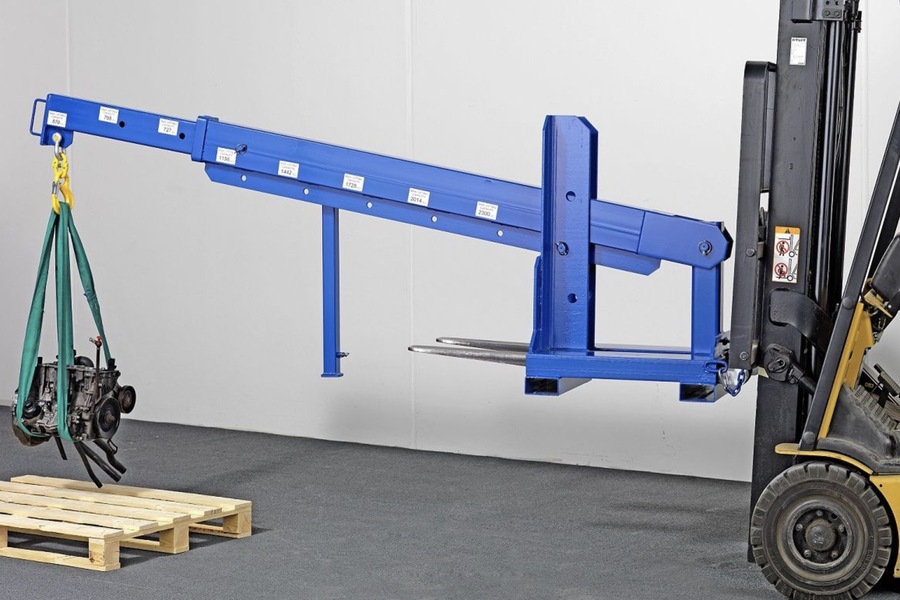Lifting equipment plays a crucial role in a wide range of industries, such as construction, manufacturing, and logistics. These devices are designed to ensure the secure and smooth transportation of heavy loads. In recent years, there have been significant advancements in technology that have resulted in the creation of RF lifting equipment. This innovative equipment utilizes radio frequency technology to improve both performance and safety. In this article, we will be comparing RF lifting equipment with traditional lifting equipment. We will take a close look at the advantages and disadvantages of each, providing valuable insights to assist organizations in making well-informed decisions.
Overview of Traditional Lifting Equipment
Types and Applications
Traditional lifting equipment includes cranes, hoists, forklifts, and jacks. These devices have been used for decades to lift and move heavy objects. Each type of equipment is designed for specific tasks, such as cranes for construction projects, hoists for lifting in warehouses, and forklifts for material handling.
Operational Mechanism
Traditional lifting equipment typically relies on mechanical and hydraulic systems. These systems use physical force and pressure to lift and move loads. Operators control the equipment manually or through basic automated systems, requiring significant skill and experience to ensure safe operation.
Overview of RF Lifting Equipment
Technological Integration
RF lifting equipment integrates radio frequency technology to enhance control and monitoring capabilities. This equipment uses RF signals to communicate between the control system and the lifting mechanism, allowing for more precise and efficient operations. RF lifting equipment is often equipped with sensors and IoT connectivity, providing real-time data on equipment status and performance.
Advanced Features
Advanced features of RF lifting equipment include automated load detection, remote operation, and enhanced safety mechanisms. These features improve the accuracy and efficiency of lifting operations, reducing the risk of human error and enhancing overall safety.

Pros of Traditional Lifting Equipment
Proven Reliability
Traditional lifting equipment has a long history of reliable performance. Many industries have relied on these devices for years, and their operational principles are well understood. This reliability makes traditional lifting equipment a trusted choice for many applications.
Lower Initial Costs
The initial purchase cost of traditional lifting equipment is generally lower compared to RF lifting equipment. For companies with budget constraints, traditional equipment can be a more accessible option, allowing them to meet their lifting needs without significant financial investment.
Simplicity of Use
Traditional lifting equipment is relatively straightforward to operate. While it requires skilled operators, the lack of advanced technological components means there are fewer complexities in its operation and maintenance. This simplicity can be advantageous in environments where advanced training may not be feasible.
Cons of Traditional Lifting Equipment
Limited Precision
Traditional lifting equipment often lacks the precision offered by modern alternatives. Manual controls and basic automation systems can result in less accurate load handling, increasing the risk of errors and accidents.
Higher Maintenance Requirements
Mechanical and hydraulic systems in traditional lifting equipment require regular maintenance to ensure optimal performance. This can lead to higher maintenance costs and increased downtime, affecting productivity.
Safety Concerns
The reliance on manual operation in traditional lifting equipment can pose safety risks. Human error, equipment wear and tear, and the absence of advanced safety features can lead to accidents and injuries.
Pros of RF Lifting Equipment
Enhanced Precision
RF lifting equipment offers enhanced precision in load handling. The integration of RF technology allows for accurate control of lifting operations, reducing the risk of errors and improving overall efficiency. Real-time data provided by sensors and IoT connectivity enables operators to make informed decisions, further enhancing precision.
Improved Safety Features
RF lifting equipment is equipped with advanced safety features, such as automated load detection, collision avoidance systems, and remote operation capabilities. These features significantly reduce the risk of accidents and injuries, ensuring a safer working environment.
Reduced Maintenance
With the cutting-edge monitoring features of RF lifting equipment, you can now proactively maintain your equipment, minimizing the chances of any unexpected breakdowns. Having access to real-time data on equipment performance is crucial for ensuring timely maintenance interventions, which can greatly reduce downtime and the resulting costs.
Cons of RF Lifting Equipment
Higher Initial Costs
The initial investment required for RF lifting equipment is higher compared to traditional lifting equipment. The integration of advanced technology and the need for specialized components contribute to these increased costs. For some companies, this higher initial expenditure may be a barrier to adoption.
Complexity of Operation
RF lifting equipment requires operators to have a higher level of technical expertise. Training programs are essential to ensure operators can effectively use the advanced features and capabilities of the equipment. This need for specialized training can be a disadvantage for companies with limited training resources.
Potential for Technological Issues
While RF technology offers numerous benefits, it also introduces the potential for technological issues. RF signal interference, software malfunctions, and connectivity problems can affect the performance of RF lifting equipment. Ensuring robust technical support and regular updates is crucial to mitigate these risks.

Relevance to Dubai and the UAE Region
Growing Construction and Infrastructure Projects
Dubai and the UAE are known for their ambitious construction and infrastructure projects. The region’s rapid development has led to increased demand for efficient and safe lifting equipment. RF lifting equipment, with its advanced features and enhanced safety, is particularly suited to meet these demands.
Regulatory Environment
The regulatory environment in Dubai and the UAE emphasizes safety and efficiency in industrial operations. The adoption of RF lifting equipment aligns with these regulatory standards, providing companies with a competitive edge. Compliance with safety regulations is crucial for operating legally and sustainably in the region.
Technological Advancement
Dubai and the UAE are at the forefront of technological innovation. The integration of advanced technologies in various sectors, including construction and logistics, is a key priority. RF lifting equipment represents a significant step forward in leveraging technology to improve industrial operations, making it highly relevant in this progressive environment.
Economic Considerations
Cost-Benefit Analysis
When deciding between traditional and RF lifting equipment, companies in Dubai and the UAE must conduct a thorough cost-benefit analysis. While RF lifting equipment has higher initial costs, its long-term benefits, such as reduced maintenance, enhanced safety, and improved efficiency, can result in significant cost savings over time.
Investment in Training
Investing in training programs for RF lifting equipment operators is essential to maximize the benefits of this advanced technology. Well-trained operators can fully utilize the capabilities of RF lifting equipment, ensuring optimal performance and safety. Companies must consider the costs and logistics of implementing comprehensive training programs.
Future Trends
Integration with IoT and AI
The future of lifting equipment lies in the integration of IoT and artificial intelligence (AI). RF lifting equipment is already equipped with IoT capabilities, and the addition of AI can further enhance its functionality. Predictive maintenance, automated decision-making, and advanced data analytics are some of the potential benefits of integrating AI with RF lifting equipment.
Sustainability and Efficiency
Sustainability and efficiency are becoming increasingly important in industrial operations. RF lifting equipment, with its advanced monitoring and control capabilities, supports sustainable practices by reducing energy consumption and minimizing waste. Companies in Dubai and the UAE are likely to prioritize sustainable equipment solutions, making RF lifting equipment a preferred choice.
Conclusion
The choice between RF lifting equipment and traditional lifting equipment depends on various factors, including budget, operational requirements, and technological readiness. While traditional lifting equipment offers proven reliability and lower initial costs, RF lifting equipment provides enhanced precision, improved safety features, and reduced maintenance needs. In Dubai and the UAE, the rapid growth of construction and infrastructure projects, along with a strong focus on technological innovation and regulatory compliance, makes RF lifting equipment an attractive option. Companies must carefully evaluate their needs and conduct a cost-benefit analysis to make an informed decision that aligns with their strategic goals.

I am happy to give reasonable advice on budgeting to people with any income level. I currently live in Portland, Oregon, and am ready to do freelance assignments and make presentations.
